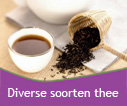Kopi Luwak factfinding
Gepubliceerd op 13-04-2018 12:10
Kopi Luwak: No Trading, No Hurting

There was a time when no list of the world’s premium coffees was complete without a mention of Kopi Luwak. But do you know what it is? And even more importantly, do you know about the impact the trade in this coffee is having on wildlife?
At prices reaching up to $700 per kilogram, Kopi Luwak seems to be an elite coffee. When you’re investing this kind of money, you want to know what you’re buying. We’re going to explore the history, processing and flavor of Kopi Luwak, and its real cost to the animal kingdom.
The history of Kopi Luwak
The name Kopi Luwak comes from Indonesia, where it was first discovered. In Indonesia, “Kopi” means coffee and “Luwak” is the name for the Asian Palm Civet cat. (1)

It’s the connection between coffee beans and the civet cat that gives Kopi Luwak its unique back story.
To discover its origins, we need to go back to the late seventeenth century. What we now know as Indonesia was then the Dutch East Indies. The Dutch governor of India sent a consignment of Arabica coffee saplings to his counterpart there.
In 1711, the trees had matured and Indonesia exported its first coffee to Europe. This made it the only place outside Africa and Arabia to cultivate coffee at scale. (2)
By the early nineteenth century, the war had left the Dutch economy in ruins. They needed to maximize the income from their colonies and introduced what they called the “Cultivation System”. Among other things, this prohibited the local people who farmed the coffee from taking any of it themselves.
For coffee farmers who’d grown to enjoy their regular beverage, this was hard to take. But with severe penalties for breaking the rules, they had to get creative.
The farmers soon noticed that coffee beans were left intact in the droppings of the Asian Palm Civet. They collected and cleaned them to make their own coffee. Their Dutch masters found out about the process, and on tasting the coffee, claimed it was better than their own.
It may be that from the start, the story of Kopi Luwak was a clever marketing device. It certainly gave the Dutch a cash crop that was expensive from the outset. Harvesting the beans from the civets’ droppings was a labor-intensive process, and restricted supply. The small, unpredictable harvests kept prices high.
Kopi Luwak in the Twentieth Century
But it wasn’t until 1991 that Kopi Luwak really came into prominence in the western world. Tony Wild, then coffee director of British firm Taylors of Harrogate, imported a single kilogram to the UK. He’d read about the coffee ten years earlier, and thought its quirky story might interest the local press.
But the fascinating tale of the coffee that passed undigested through the civet cat proved to have much wider appeal. It was picked up by national media, then went global. It appeared on the Oprah Winfrey Show and Hollywood film The Bucket List. You can see a clip from the movie here.
Anyone who considered themselves a coffee connoisseur wanted to try it. All this was to become very bad news for the civet cat.
With global demand outstripping supply, producers sought new ways to farm large quantities of Kopi Luwak. Wild civet cats – naturally shy, nocturnal creatures – were caught, caged and force-fed large quantities of coffee beans.
The details of the conditions in which they are kept today make difficult reading.
In the wild, civet cats eat a range of fruits, as well as insects and small mammals. In captivity, their restricted coffee bean diet causes many health problems, exacerbated by the stress of living in cages. They fight amongst themselves, gnaw off their own legs, lose their fur, pass blood in their feces and many dies. (3)
This YouTube video exposes the cruelty of the conditions in which civet cats are kept.
Horrified by what he had helped to create, in 2013 Tony Wild began a campaign to end the trade in Kopi Luwak. Others have argued in favor of ethical production. Certification programmes have been set up in a bid to help consumers choose coffee produced by wild civets.
But what does Kopi Luwak taste like?
The sad truth is that lots of luxury products come at a high price to animals and the environment. Perhaps, although it’s sad for the civets, the taste of Kopi Luwak really is something special?
The flavor of Kopi Luwak is said to be superior to other coffees for two reasons. First, the civet cat selects only the choicest coffee beans to eat. Secondly, the process of passing through the civet’s digestive system adds enzymes that produce a unique taste. (4)
It’s easy to see that coffee from force-fed civets won’t meet one of those criteria. The civets are no longer “choosing” to eat one fruit over another. But what about the argument that the digestive enzymes improve flavor?
Lots of studies have been undertaken to look at what happens to the coffee beans inside a civet’s gut. A 2002 study by scientists at Canada’s University of Guelph reassuringly found that Kopi Luwak was at least safe.

Despite the beans picked out of feces, they carried few pathogenic organisms. The researchers noted that the beans had to be thoroughly washed in order to remove traces of fruit pulp. This washing would also get rid of nasty bacteria.
The scientists observed a number of differences in the appearance of Kopi Luwak beans compared to Columbian coffee beans.
The Kopi Luwak beans were found to have more red and yellow tones. Their surfaces were also less pitted than the Colombian beans. This suggested they’d been worn down as they passed through the civets’ digestive systems.
But none of this would have an impact on the flavor. The only differences that looked as if they might affect flavor related to protein content and volatile organic compounds.
Kopi Luwak beans had less protein than the Colombian beans, suggesting proteins had leached out during digestion. The researchers also found that the volatile compounds in Kopi Luwak were “significantly different”.
They hypothesized that these two differences might make Kopi Luwak less bitter, and have a different flavor and aroma. They said, though, that more work was needed to establish if that was really the case.
The lead scientist, Massimo Marcone, sagely noted, “People are buying this product for the mystique, not necessarily for the flavor.” (5)
Other studies, though, have looked at the flavor of the coffee itself. In theory, it should be difficult to draw very firm conclusions. Kopi Luwak, after all, isn’t a particular type of coffee, but a means of processing it. It can be made from any kind of coffee bean, so the flavor could vary accordingly.
It’s interesting, though, that professional coffee tasters have been pretty unanimous in their verdict. Kopi Luwak, they say, simply doesn’t taste very good.

Rocky Rhodes of the International Coffee Consulting Group undertook one very interesting experiment. At a farm on Java, he compared coffee beans processed with and without the aid of caged civet cats. The beans were of the same variety and grown in the same conditions.
Rhodes gave the coffees points in line with the scale used by the Specialist Coffee Association of America. The results were clear.
Kopi Luwak scored lowest of the four coffees he tasted, two points lower than the worst of the others. Rhodes concluded that passing through the civet’s digestive tract actually diminished the coffee’s flavor and acidity. (6)
Artisan producer George Howell was also less than impressed with the production process. As he stated, “Buyer beware, higher price doesn’t necessarily mean higher quality”.(7)
And you don’t need to be a coffee guru to find Kopi Luwak disappointing. Tim Carman of the Washington Post likened the flavor to the taste of “petrified dinosaur droppings.” Not quite the experience most of us would hope for from premium coffee! (8)
What about certification?
It seems pretty clear that Kopi Luwak is a gimmick. It’s a great story that’s been used to sell a not-so-great coffee at vastly inflated prices.

But maybe it wasn’t always this way. Perhaps civet cats roaming free, selecting superior coffee fruits as part of a balanced diet, produce an altogether different product? One that isn’t degraded by enzymes produced by frightened, stressed animals?
Is there a way of finding out?
The question of whether it’s really possible to source ethically produced Kopi Luwak has been the subject of heated debate. Various certification programs have been set up in a bid to help consumers choose coffee processed by wild civets.
The Rainforest Alliance and UTZ both run programs designed to protect the welfare of the civets. They also aim to support the farmers to achieve fair prices for their products. (9)
Unfortunately, these programs are nowhere near as stringent as necessary to prevent caged civets being used to produce “ethical” coffee. That’s because they work in a very simple way, with a one-off inspection.
Producers pay a fee for an official to inspect their plantation. If the official doesn’t find any caged civets during the inspection, the coffee is certified as “wild” Kopi Luwak.

That means there’s nothing to stop a producer boosting production by bringing in caged civets as soon as they have their certificate. Those working in the industry claim this is sadly common practice. (10)
One farmer told an investigator from animal welfare organization PETA (People for the Ethical Treatment of Animals) that producing exclusively wild-sourced civet coffee was nearly impossible. He also said it was common for coffee from captive civets to be deliberately mislabelled. (11)
There is more that could be done. Higher certification fees could allow for random checking to ensure producers aren’t using caged civets. Any farmers found with caged animals could have their certificates revoked. They could face steep fines, or even be banned from selling.
The good news is that there’s now a real opportunity for things to get better. In January 2018, the two main certifying organizations, Rainforest Alliance and UTZ, merged. They plan to introduce a single new certification programme in 2019.
Their website notes out the aims of the new programme. It’s intended to “maximize positive social, environmental, and economic impact, while offering farmers an enhanced framework to improve their livelihoods while protecting the landscapes where they live and work.” (12)
There’s no mention there of animal welfare. For the sake of the civet cats – and all the other animals involved in agriculture – let’s hope that’s an oversight. Importantly, there’s still a chance to make sure that’s corrected. The new program is subject to what they call a “far-reaching consultation.”
If you want to have your say, you can sign up for information by visiting the UTZ website here. Just select the box on the second page of the very short form to say you’re interested in coffee. When the time comes, be sure to ask for animal welfare standards to be incorporated in the new code.
The future of Kopi Luwak
The truth is that the poor treatment of civet cats has already blighted the trade in Kopi Luwak. As consumer awareness of the problem has grown, sales have declined.

In 2015, Mulyono Susilo, Chairman of the Central Java branch of the Association of Indonesian Coffee Exporters (AEKI), said that “bad press” had caused a sharp fall in the price. (13)
In 2013, one kilogram of the coffee was selling for $77. Two years later, that had fallen to just $19. The collapse in price led to the AEKI itself calling for tighter controls to restore the reputation of their product.
Conclusion
There’s no denying that the story of Kopi Luwak is one that captures the imagination. Sadly, today’s coffee is a million miles away from its traditional origins.
Low animal welfare standards harm both the civet cats and ultimately the farmers themselves. And all that for a coffee that all the experts agree is poor quality. Things can – and should – be better than this.
Making sure the Rainforest Alliance and UDZ’s new certification program includes animal welfare standards would be a good start. Visit the UDZ website today to make sure your voice is heard in the consultation process.
For now, finding genuinely “wild” Kopi Luwak is nigh-on impossible. Until that changes, the best bet is to steer clear of it altogether.





